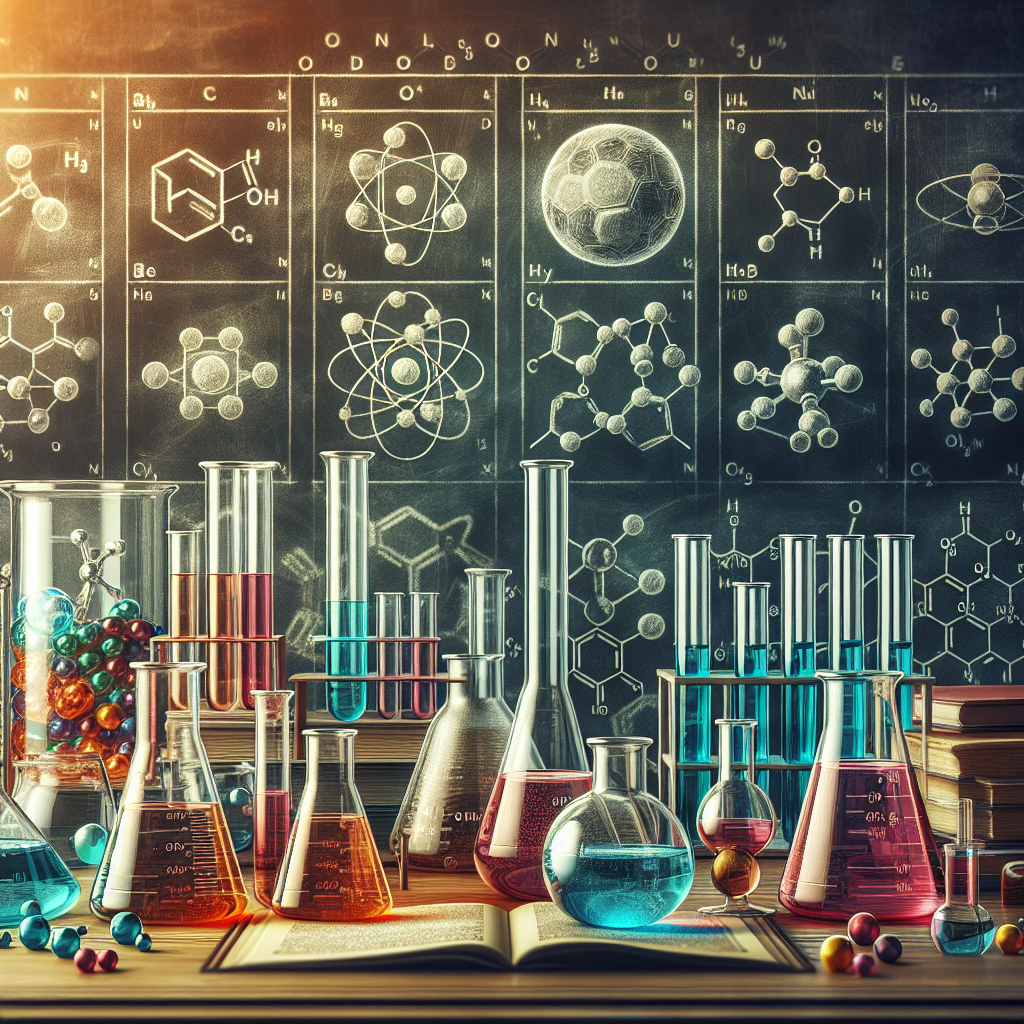
Chemistry, as a fundamental scientific discipline, serves as a cornerstone for understanding the natural world and the various processes that govern it.
This field the Fundamentals of Chemistry not only explores the properties of matter but also its interactions, transformations, and the principles underlying these changes.
By investigating both the macroscopic and microscopic behaviors of substances, chemistry enables us to comprehend complex phenomena that occur around us, ranging from the composition of materials to the biochemical processes that sustain life.
At the heart of chemistry are two key concepts: elements and compounds. An element is a pure substance consisting entirely of one type of atom, which cannot be broken down into simpler substances through chemical means. Each element is uniquely defined by its atomic number, which corresponds to the number of protons in its nucleus. Elements form the building blocks of chemistry, and their interactions give rise to a multitude of compounds. A compound, on the other hand, is a substance formed when two or more elements chemically bond in fixed proportions, resulting in a material with distinct properties that differ from those of its constituent elements.
Understanding these fundamental concepts not only allows for a deeper appreciation of chemical reactions but also establishes the groundwork for further study in chemistry. Fundamental principles such as the periodic law, which organizes elements based on their properties, and the laws of chemical combination guide our exploration of more complex topics. The study of chemistry is essential for advancements across various fields, including medicine, environmental science, and materials engineering, underscoring its far-reaching impact on society and technology. By delving into these concepts, we begin to unveil the intricate tapestry of interactions that constitute the essence of our physical universe.
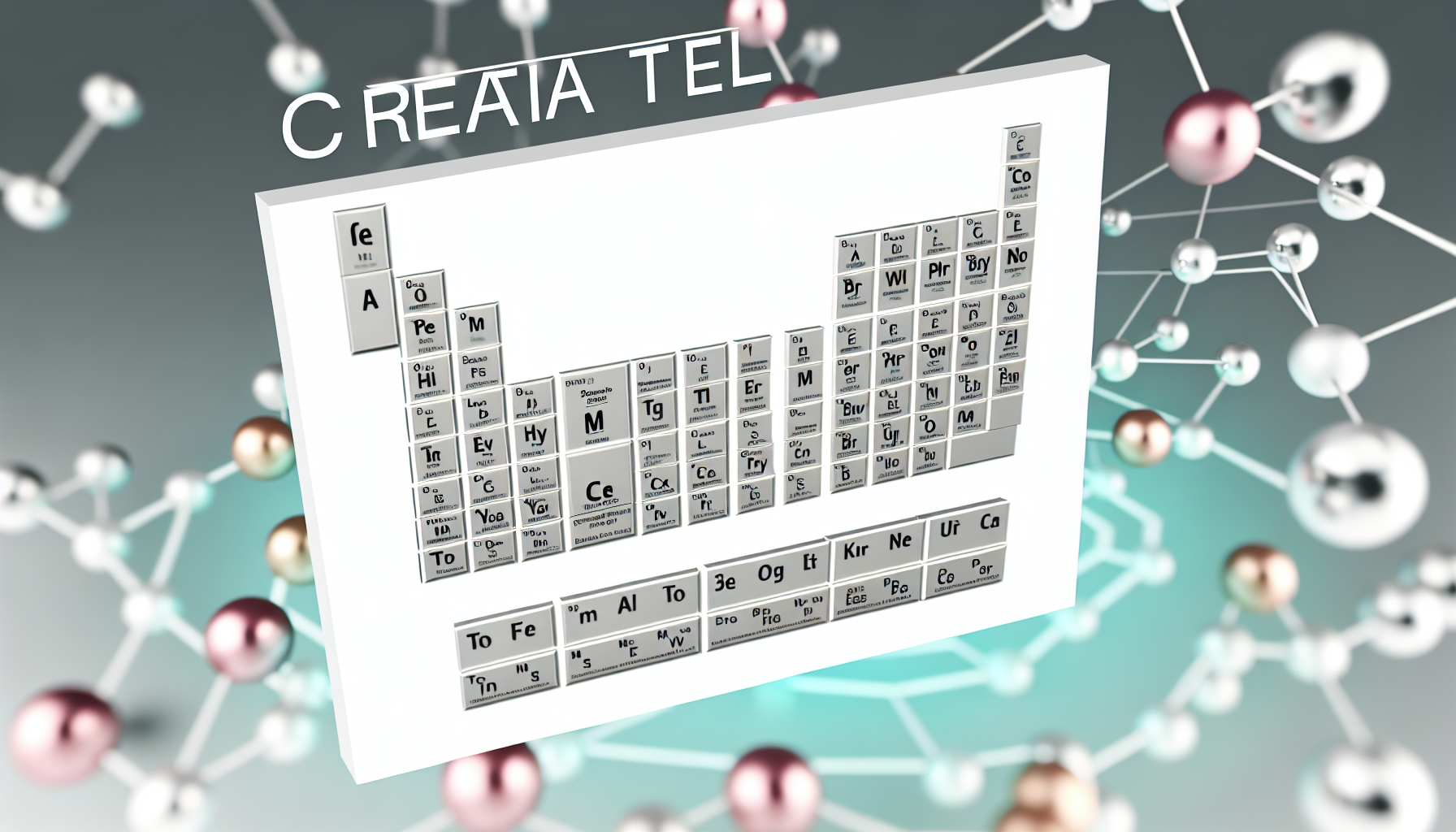
Elements are the fundamental building blocks of matter, consisting of atoms that cannot be broken down into simpler substances through chemical means. Each element possesses unique properties and characteristics, defined primarily by the number of protons in its nucleus, a feature termed the atomic number. The periodic table is a systematic arrangement of these elements, providing crucial insights into their relationships and behaviors. The significance of the periodic table cannot be overstated; it is an invaluable resource that categorizes elements based on their atomic structure and chemical properties.
The periodic table is organized into rows, known as periods, and columns, called groups. Each period corresponds to the number of electron shells around an atom’s nucleus, while groups contain elements that share similar properties and chemical behaviors. For example, group 1 elements are known as alkali metals, characterized by their high reactivity and the presence of a single electron in their outer shell. Conversely, group 18 elements, the noble gases, are known for their lack of reactivity due to their complete electron shells. Furthermore, the table delineates three primary categories of elements: metals, nonmetals, and metalloids. Metals, typically found on the left side of the table, exhibit good conductivity and malleability. Nonmetals, located on the right, are generally poor conductors of heat and electricity, while metalloids possess properties that are intermediate between the two.
For students and enthusiasts seeking to memorize the elements and their corresponding symbols, employing mnemonic devices can be particularly effective. Creating acronyms or memorable phrases using the first letter of each element can aid retention. Additionally, utilizing flashcards or interactive periodic table applications can enhance the learning experience. By understanding the organization of the periodic table and the nature of elements, one can better appreciate the intricacies of chemistry.
Compounds are substances formed when two or more elements chemically bond together. This process of formation occurs through various types of chemical bonding, most notably ionic, covalent, and metallic bonds. Each type of bond contributes distinct properties to the resulting compound, influencing its behavior and applications in the real world.
Ionic bonds are characterized by the transfer of electrons from one atom to another, resulting in oppositely charged ions that are attracted to each other. This type of bonding typically occurs between metals and nonmetals. A common example is sodium chloride (NaCl), where sodium donates an electron to chlorine, thus forming a stable compound. In contrast, covalent bonds involve the sharing of electrons between atoms, commonly found in compounds formed by nonmetals. For instance, water (H2O) showcases covalent bonding, where each hydrogen atom shares electrons with the oxygen atom, leading to the formation of a stable molecule.
Metallic bonds present a different scenario, characterized by a ‘sea of electrons’ that are free to move around, allowing for properties such as electrical conductivity and malleability. This type of bonding is prevalent in metallic elements, resulting in compounds that exhibit a variety of physical properties, making them suitable for numerous applications. For instance, alloys are compounds that incorporate metals and exhibit enhanced strength and durability.
Understanding chemical formulas and nomenclature is crucial when discussing compounds. A chemical formula conveys the elements present in a compound and their respective ratios, while nomenclature provides a systematic way to name these compounds. For example, the formula for ammonia is NH3, indicating one nitrogen atom and three hydrogen atoms. Proper identification and writing of chemical formulas allow scientists and researchers to communicate effectively about various compounds. The significance of compounds extends to everyday life, as they are pivotal in industries ranging from pharmaceuticals to agriculture, showcasing their vital role in diverse applications.
Chemical reactions are fundamental processes in chemistry that involve the transformation of reactants into products through the breaking and forming of chemical bonds. These reactions can be classified into several categories, each with distinct characteristics. The five primary types of chemical reactions include synthesis, decomposition, single replacement, double replacement, and combustion.
In synthesis reactions, two or more reactants combine to form a single product. This type of reaction is exemplified by the formation of water from hydrogen and oxygen gases:
2H2 + O2 → 2H2O
Conversely, decomposition reactions involve a single compound breaking down into two or more products, as seen when calcium carbonate decomposes into calcium oxide and carbon dioxide:
CaCO3 → CaO + CO2
Single replacement reactions occur when one element replaces another in a compound, exemplified by zinc displacing copper in copper sulfate:
Zn + CuSO4 → ZnSO4 + Cu
Double replacement reactions involve the exchange of ions between two compounds, which is often seen in precipitation reactions. A classic example is the reaction between barium chloride and sodium sulfate, forming barium sulfate and sodium chloride:
BaCl2 + Na2SO4 → BaSO4 + 2NaCl
Combustion reactions entail the reaction of a substance with oxygen, producing energy in the form of heat and light. Hydrocarbon combustion, such as methane burning in oxygen, is a prime illustration:
CH4 + 2O2 → CO2 + 2H2O + energy
In all chemical reactions, the law of conservation of mass asserts that matter is neither created nor destroyed. Therefore, the mass of reactants must equal the mass of products, reinforcing the importance of balancing chemical equations in understanding these fundamental processes.
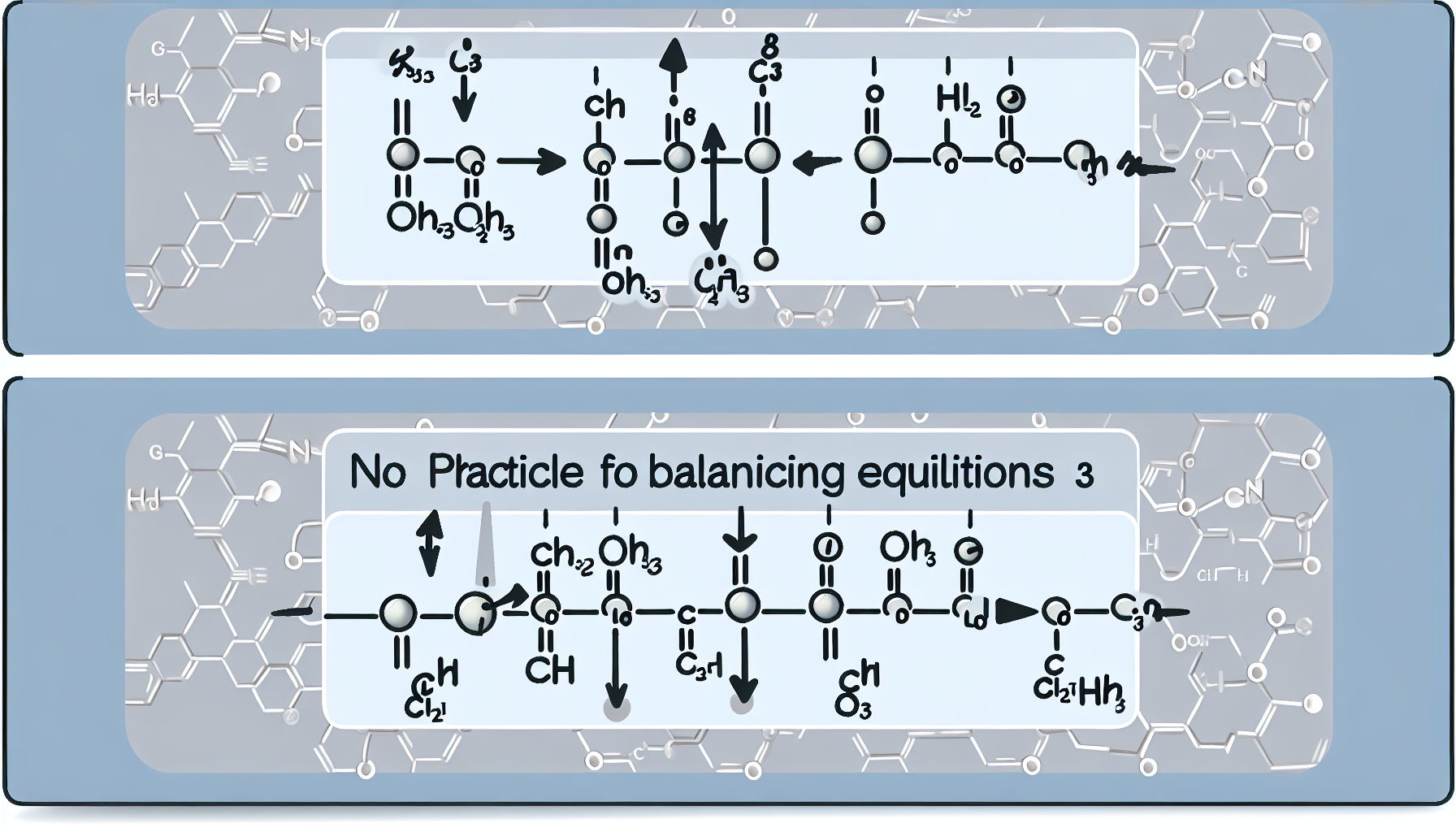
Balancing chemical equations is an essential skill in the study of chemistry, allowing individuals to represent reactions accurately. To begin, it’s important to understand the law of conservation of mass, which states that matter cannot be created or destroyed in a chemical reaction. Therefore, the number of atoms of each element must be equal on both sides of the equation. Here are some practical tips to master this crucial task.
First, write down the unbalanced equation, ensuring that all reactants and products are correctly identified. Next, count the number of atoms for each element on both sides of the equation. This step is vital for recognizing which elements require balancing. Once you ascertain which elements are imbalanced, start with the most complex molecule first. Adjust coefficients (the numbers in front of the molecules) rather than changing subscripts, as this preserves the identity of each compound.
It’s also helpful to keep an eye out for common patterns during this process. For instance, when balancing equations involving polyatomic ions that remain intact through the reaction, treat them as single units. Moreover, familiarity with certain reaction types can expedite balancing; for example, combustion reactions typically follow predictable patterns.
Avoid common pitfalls, such as balancing one element at a time without revisiting others, which can lead to oversight. Always double-check your work by counting atoms again after adjustments. To reinforce these strategies, practical exercises are crucial. Many online resources offer interactive activities to practice balancing equations in a dynamic way.
Additionally, utilizing online calculators and educational videos can enhance learning. These tools often provide visual aids and step-by-step walkthroughs, making the balancing process more intuitive. By embracing these methods and resources, learners can effectively improve their skills in balancing chemical equations, a fundamental aspect of chemistry.
Analytical chemistry is a pivotal branch of chemistry focused on the qualitative and quantitative analysis of substances. It encompasses a variety of techniques that facilitate the identification and measurement of chemical compounds, ensuring high accuracy and precision in results. Some primary techniques employed in analytical chemistry include titration, spectroscopy, and chromatography.
Titration is a widely utilized technique that determines the concentration of a solute in a solution. The process involves the gradual addition of a titrant to a solution containing the analyte until a reaction reaches its endpoint, indicated by a color change or measurement of pH. This quantitative method is extensively used in fields such as pharmaceuticals, to ensure the correct dosages of active ingredients, and in food chemistry, to assess acidity levels.
Spectroscopy, on the other hand, exploits the interaction of light with matter to analyze the composition of substances. Techniques such as infrared (IR) spectroscopy and nuclear magnetic resonance (NMR) spectroscopy provide valuable insights into molecular structure and dynamics. In environmental science, spectroscopy is essential for detecting pollutants in air and water samples, thus aiding in assessing environmental health and safety.
Another critical analytical technique is chromatography, which separates components of a mixture based on their chemical properties. High-performance liquid chromatography (HPLC) and gas chromatography (GC) are two common methods that have proven invaluable in quality control processes in the pharmaceutical industry and in forensic analysis to identify substances in crime scene investigations.
These analytical techniques play significant roles in various industries, ranging from pharmaceuticals and environmental monitoring to food safety and quality assurance. By integrating robust analytical chemistry methods, researchers and professionals can ensure compliance with regulatory standards, foster innovation, and promote public safety. Understanding these fundamentals allows for better comprehension of how substances interact and how they can be monitored effectively in our daily lives and various scientific pursuits.
Organic chemistry plays a pivotal role in our understanding of the chemical basis of life. It primarily centers around carbon compounds, which form the backbone of various organic molecules essential for biological functions. Carbon’s unique ability to form stable bonds with a wide array of elements allows for the creation of complex structures that underpin all living organisms. In organic chemistry, the classification of compounds into various functional groups significantly enhances our comprehension of their chemical behavior and interactions.
One of the foundational concepts in organic chemistry is the functionality of these groups, which dictate the characteristics of organic compounds. For example, hydroxyl groups (-OH) make alcohols soluble in water, while carboxyl groups (-COOH) impart acidic properties. Such variations help explain the diverse functionalities of biomolecules, including proteins, carbohydrates, lipids, and nucleic acids—the four macromolecules that are indispensable for life.
Biological chemistry, often referred to as biochemistry, further extends the principles of organic chemistry to examine the intricate chemical processes within living organisms. For instance, proteins, composed of amino acids linked by peptide bonds, perform a variety of functions, including acting as enzymes to catalyze metabolic reactions. Carbohydrates serve as energy sources and structural components, while lipids play crucial roles in cellular membranes and energy storage. Nucleic acids, such as DNA and RNA, are essential for genetic information transfer and storage.
Understanding the reactions that involve these compounds is fundamental to both organic and biological chemistry. From enzyme-catalyzed processes to metabolic pathways, the interplay of organic reactions drives life itself. This interrelationship emphasizes how organic chemistry lays the groundwork for biological processes, highlighting the importance of studying these disciplines in tandem. The synthesis and breakdown of biomolecules amidst numerous chemical reactions illustrate how chemistry is at the heart of life’s complexity.

In the digital age, access to educational resources has tremendously expanded, especially in the field of chemistry. Numerous online platforms offer comprehensive courses that cater to various levels of expertise, from beginners to advanced learners. Websites such as Coursera, edX, and Khan Academy present a diverse array of chemistry courses encompassing elements, compounds, and reactions. These platforms often collaborate with prestigious institutions, providing high-quality content that adheres to academic standards.
For those interested in general organic and biological chemistry, many courses specifically target these areas. For example, edX offers a series of courses in organic chemistry that delves into reaction mechanisms and molecular structures, enabling learners to grasp the core principles underlying organic substances. Similarly, platforms such as Coursera have courses exploring biological chemistry, blending chemistry with biological systems, which is particularly relevant for students in life sciences.
Analytical chemistry is another significant area where various resources are available. Institutions like MIT OpenCourseWare provide free access to lectures and materials on analytical techniques, including spectroscopy and chromatography. These resources are invaluable for learners wishing to enhance their laboratory skills and theoretical knowledge.
When selecting the right online chemistry courses, it is essential to consider individual learning styles and preferences. Some learners may benefit from structured courses with clear objectives and assessments, while others may prefer more flexible formats that allow self-paced study. Additionally, prospective students should evaluate course reviews, instructor qualifications, and the availability of supplementary materials, such as quizzes and discussion forums, to ensure an enriching learning experience. By utilizing these resources, learners can build a solid foundation in chemistry fundamentals, paving the way for further exploration in this fascinating field.
To solidify your understanding of chemistry fundamentals, engaging in various activities and quizzes can be particularly beneficial. These exercises not only reinforce your knowledge but also promote active learning through interactive experiments and problem-solving tasks. Incorporating quizzes into your study routine can help you identify areas that require further attention, while experiments will allow you to see chemistry in action.
One of the simplest yet most effective activities is conducting home experiments using common household items. For instance, you can explore the concept of acid-base reactions by mixing baking soda with vinegar. This hands-on experience physically demonstrates how compounds interact and change during a reaction, providing a memorable learning experience. Moreover, documenting your observations in a chemistry journal can enhance your analytical skills.
In addition to individual studies, collaborative learning can significantly enrich the educational process. Forming study groups allows you to share knowledge, tackle complex problems together, and discuss various chemistry concepts in greater depth. Consider organizing group activities, such as creating chemistry-themed games or conducting presentations on different elements and compounds. These activities not only make learning interactive but also foster teamwork and communication skills.
Quizzes serve as an excellent way to test your understanding of chemistry. Numerous online platforms offer quizzes tailored to specific topics like the periodic table, chemical reactions, or the properties of substances. Take advantage of these resources to keep your learning experience fresh and challenging. Incorporating fun facts about chemistry into your quizzes can make this exercise more enjoyable, encouraging deeper exploration into the subject. Ultimately, integrating activities, experiments, and quizzes into your study routine will contribute to a comprehensive understanding of chemistry fundamentals.
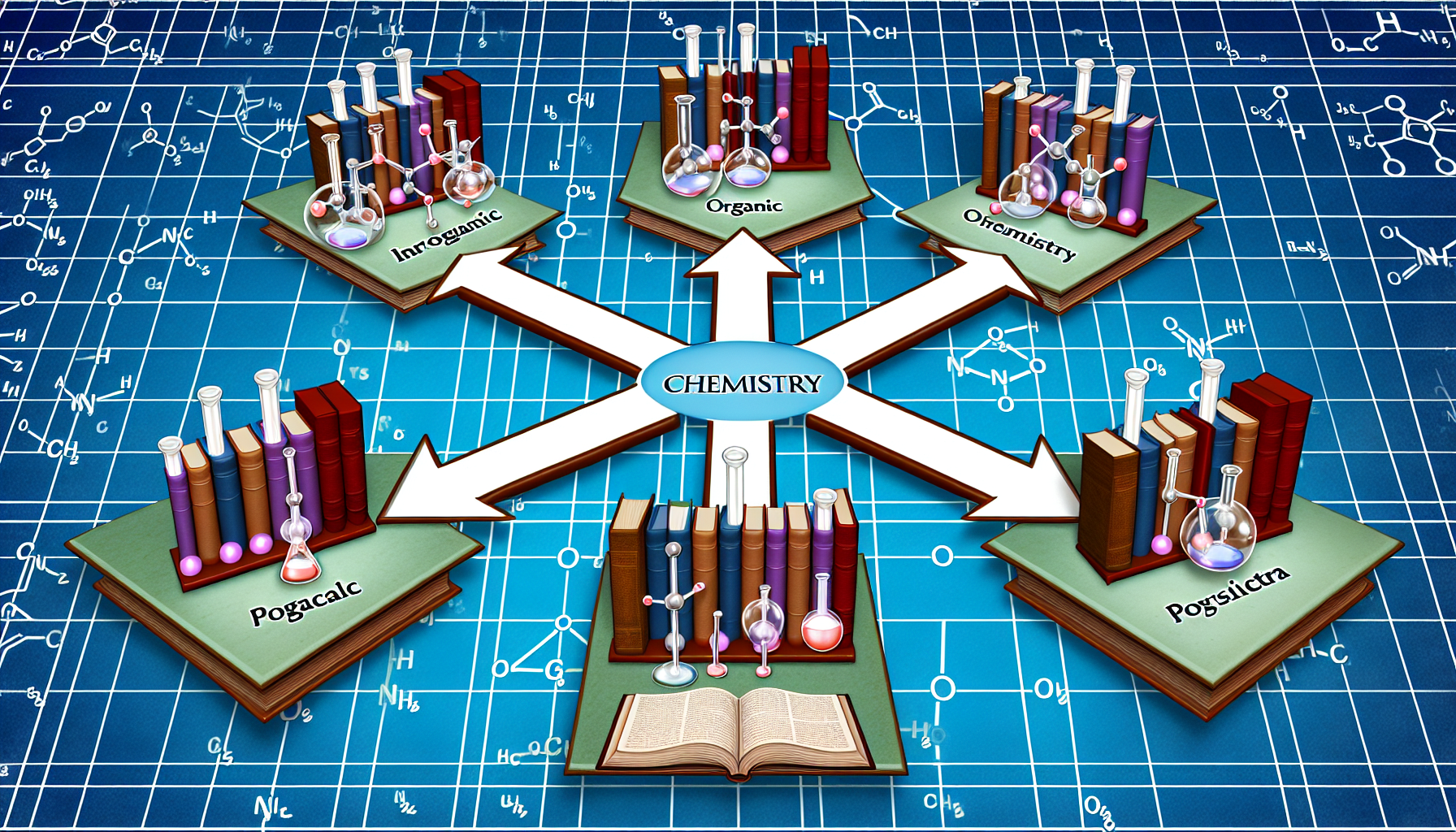
As we conclude our exploration of the fundamentals of chemistry, it is essential to recap the key concepts discussed throughout this post. We have examined the basic building blocks of matter: elements and compounds. Our discussion highlighted how elements serve as the fundamental units of chemistry, while compounds are formed through the combination of different elements, showcasing the versatility of chemical interactions. Understanding these concepts creates a solid foundation for delving deeper into more complex chemical reactions and theories.
Equally crucial is our understanding of chemical reactions themselves, which illustrate the dynamic nature of matter. These processes pave the way for various applications in fields such as medicine, environmental science, and materials engineering. By recognizing the interconnections between elements, compounds, and chemical reactions, readers are equipped with a robust framework to appreciate the broader implications of chemistry in everyday life.
To continue your chemistry journey, consider taking actionable steps that will enhance your learning experience. Joining study groups can provide a collaborative environment where you can engage with peers, exchange knowledge, and tackle challenging concepts collectively. Additionally, participating in hands-on experiments fosters a practical understanding of chemical principles, allowing you to observe the theories you learn in action.
Setting personal goals is another effective approach to furthering your education in chemistry and related fields. Whether it involves enrolling in advanced chemistry courses, pursuing certifications, or exploring interdisciplinary connections in biology and environmental science, each step you take builds upon your foundational knowledge. Embrace the opportunity to delve deeper into the charming world of chemistry, as it is an ever-evolving field rich with potential discoveries and innovations.
Looking to advertise, promote your brand, or explore partnership opportunities?
Reach out to us at
[email protected]





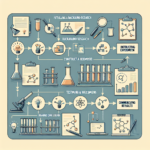

Chose where you want to study, and we will let you know with more updates.